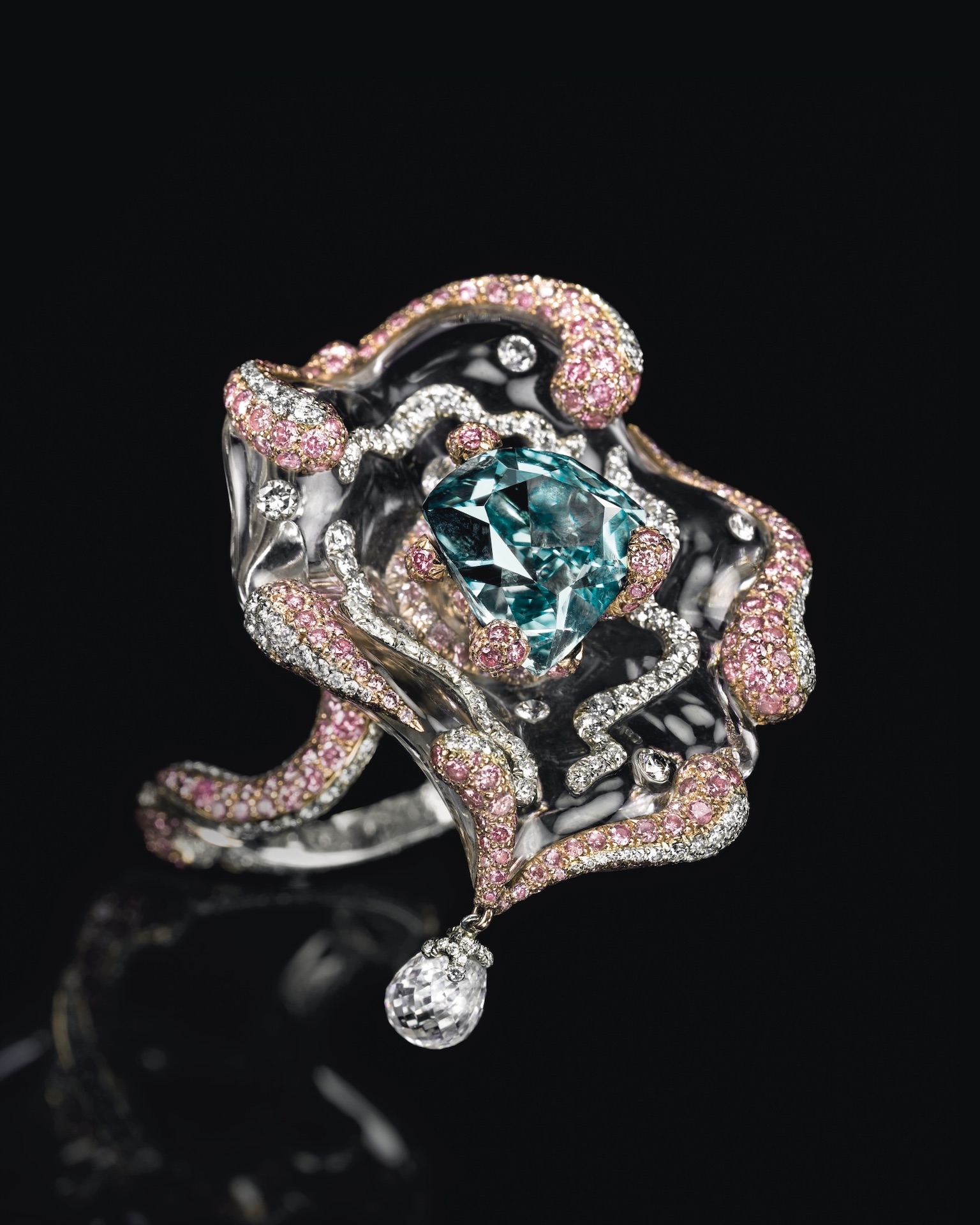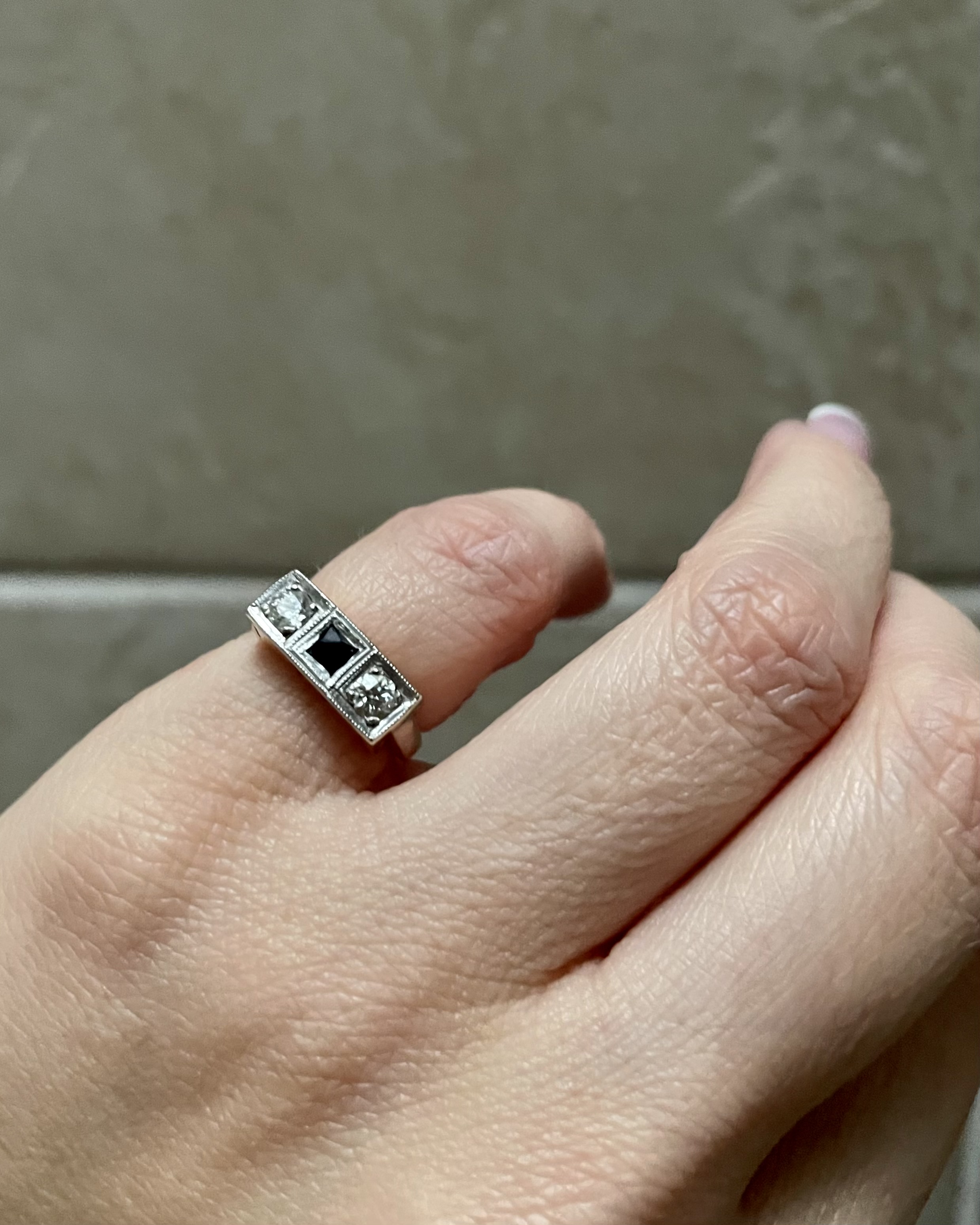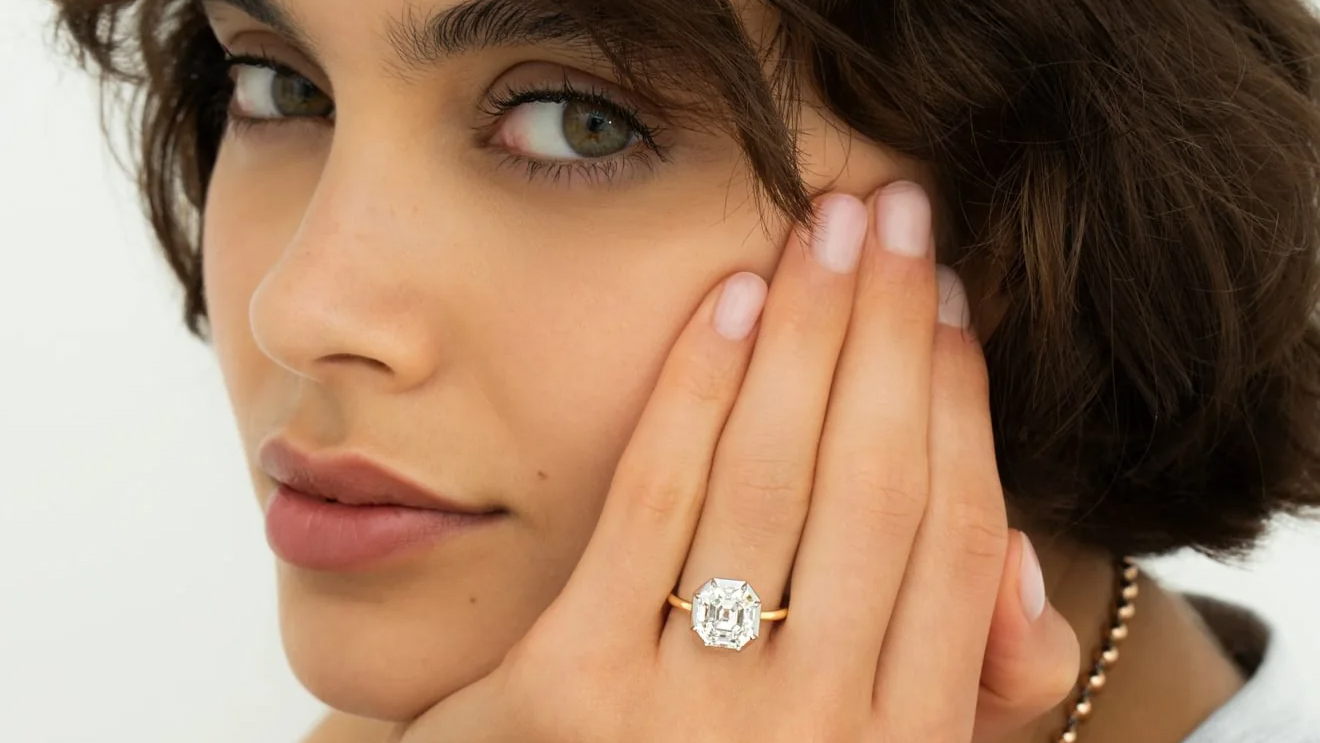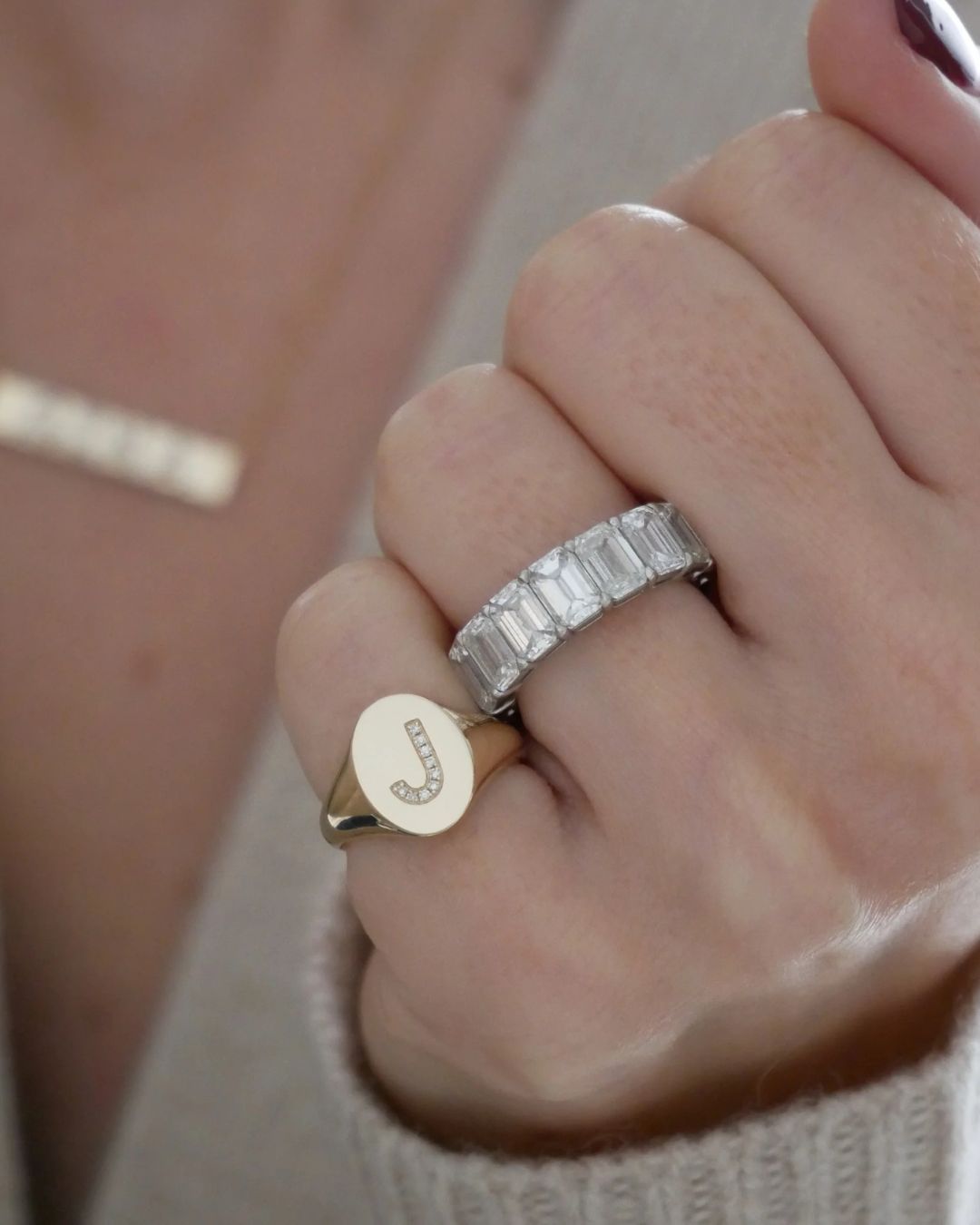< Historic Diamonds / Famous Diamonds
Diamond Hall of Fame: The Ocean Dream Diamond
The mesmerizing blue-green diamond that makes one industry expert’s pulse race.
Written by: Jill Newman
Published: November 4, 2025

Few stones can quicken the pulse of Tom Moses, the Gemological Institute of America’s (GIA) executive vice president and chief research and laboratory officer, who has graded just about every legendary diamond of the last five decades. But the Ocean Dream diamond did.
The breathtaking 5.51 fancy vivid blue-green diamond, cut in a triangular shape, is unlike any other diamond on Earth. “I could spot it from across the room,” said Moses. “I have never seen a natural blue-green diamond of this intensity of color, size, and it is a Type IIa, which certainly makes it a unicorn.”
The only diamond that comes close is the Dresden Green, he says. But even the 42-carat green diamond, also a Type IIa (a category of diamonds that are the most chemically pure), doesn’t come close to the Ocean Dream’s electric color. Up until the Ocean Dream, Moses had only seen this shade of blue-green in stones less than one carat, making this diamond a true natural wonder.
Meet the Experts

Tom Moses is the Executive Vice President and Chief Research and Laboratory Officer of the Gemological Institute of America’s (GIA).

Max Fawcett is Christies’ Global Head of Jewelry. Max Fawcett joined Christie’s a decade ago and has served as both specialist and auctioneer, leading record-breaking sales in London, Geneva, Hong Kong, and New York.
The Origin Story of the Ocean Dream Diamond

Discovered as a 11.7 carat rough in Central Africa in 2002, the Ocean Dream was purchased by Cora Diamond Corporation in New York. Moses conferred with the company over several months during the high stakes cutting process, a particularly risky endeavor given the stone’s sensitivity to heat.
“It was a very tense cutting process because it was a gamble,” says Moses about the period more than 20 years ago when the stone was being polished, and that’s what makes his pulse race. The gamble paid off.
When the diamond finally appeared at Christie’s Magnificent Jewels sale in May 2014, it fetched $9.8 million. It was offered in a sculpted rock crystal ring with pavé pink and white diamonds. To this day, it remains the largest fancy vivid blue-green diamond ever graded by the GIA. A stone of this rarity would likely command an even higher price at auction today, said Moses. That’s simply because nothing like it has ever appeared again.
Why Collectors Covet Niche Colored Diamonds



“It’s an extremely rare stone,” says Max Fawcett, Christies’ Global Head of Jewelry. Unlike vivid pink or vivid blue diamonds, he calls the Ocean Dream a “niche fancy-colored diamond” along with orange and pure green diamonds, essentially colors that are almost unheard of. These niche colored diamonds, he says, appeal to a small but extremely knowledgeable group of collectors.
When they do come up for sale, Fawcett notes, they spark fierce competition. “Those people who understand them realize how rare they are.” More than decade after auction, Fawcett says collectors still ask if the owner might be interested in selling. “The answer is no,” he said. “Collectors on this level usually want to hold on to the stones.”
ACutting the Ocean Dream Diamond: A Stress-Inducing Process
At first glance, the stone’s arresting electric blue-green hue grabs your attention. And once you learn the remarkable science behind it, you realize why Moses refers to it as a unicorn—and why it makes his pulse race.
The blue-green color is the result of an extraordinary natural occurrence. “Most green diamonds owe their color to radiation exposure near the Earth’s surface over millions of years,” explains Moses. It’s serendipity that these events align at the precise temperature because if the stone heats up too much, the diamond’s green hue turns to brown or black. As a result, cutting is a make-or-break moment.
“The trick is to know how much to polish the stone’s surface, so you don’t lose the color, because you if you go too deep, you risk losing the radiation induced color,” said Moses. “You can easily turn a multimillion-dollar stone into a colorless diamond worth a fraction of that.”
Even its unique triangular shape was chosen for color preservation, not aesthetics. Staying as close to the rough shapes allows a better chance of retaining the color. During the cutting and polishing, the stone had to constantly be cooled because with radiation-induced color, if its temperature rises above 300 degrees Celsius you there is a risk it will turn brown.
“It was a very slow, tedious process,” said Moses. “The stone’s thermal conductivity works against you.”
The Ocean Dream Diamond Is a Legend Among Legends


The Ocean Dream Diamond made its public debut in 2003 as part of Smithsonian’s Splendor of Diamonds exhibit, a showcase of the world’s most rare and valuable diamonds, alongside the famous Moussaieff Red, De Beers Millennium Star, and Steinmetz Pink. After that it vanished into private hands, and today it is still whispered about among collectors.


A diamond of this nature always draws fascination. “Gemstones, particularly diamonds, are spellbinding,” said Moses. “We think looking into a pool of water as soothing but looking at a diamond with its brilliance and scintillation, well that’s captivating.” The Ocean Dream is that captivating, beautiful, and unforgettable.











